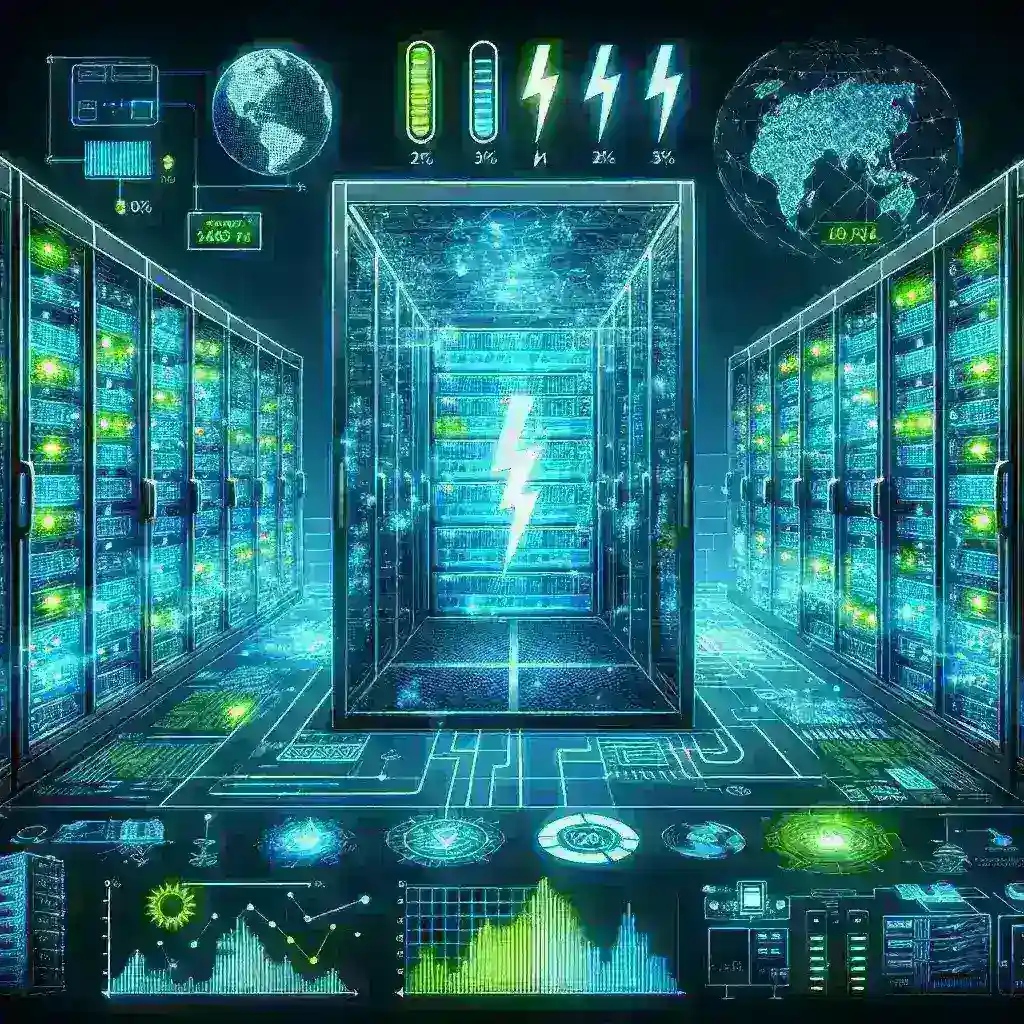Introduction
As we move towards a more digitally driven world, the importance of data centers is more pronounced than ever. They serve as the backbone of cloud computing, digital storage, and data processing. Recent forecasts suggest that by 2025, data centers could consume up to 20 percent of the global electricity supply. This impending reality raises critical questions: Why must data centers plan for such a significant increase in electricity usage, and how can they adapt to this challenge?
The Growing Demand for Data
In the age of big data, the volume of information generated is staggering. With the proliferation of IoT devices, social media, and streaming services, data creation is projected to reach 175 zettabytes by 2025. This exponential growth necessitates vast amounts of computing power and storage, which directly translates to higher energy consumption. As a result, data centers must strategize their energy usage to meet future demands without overwhelming the electrical grid.
Energy Consumption Statistics
- In 2020, data centers already accounted for about 2% of global electricity use.
- The energy consumption of data centers is expected to rise as more businesses transition to cloud-based infrastructures.
- Energy-efficient data centers are projected to save 30% on electricity consumption compared to traditional facilities.
The Environmental Impact
The sustainability of our energy systems is increasingly under scrutiny. Data centers, with their high energy needs, face criticism for their carbon footprints. According to the International Energy Agency (IEA), if left unaddressed, the electricity consumption of data centers could contribute to significant greenhouse gas emissions. As such, it is crucial for data centers to implement energy-efficient practices.
Regulatory Pressures
Governments worldwide are implementing stricter regulations on energy consumption and carbon emissions. Initiatives such as the Paris Agreement emphasize the need for organizations to reduce their carbon footprints. Data centers that proactively plan for increased energy usage will be better positioned to comply with these regulations and avoid potential penalties.
Strategies for Energy Efficiency
To address the challenge of increased electricity consumption, data centers can adopt several strategies:
1. Implementing Energy-Efficient Technologies
Upgrading to energy-efficient hardware, such as servers and cooling systems, can significantly reduce energy consumption. Advanced technologies, including AI-driven analytics, can optimize energy use based on demand.
2. Embracing Renewable Energy Sources
Transitioning to renewable energy sources like solar, wind, and hydropower can mitigate the environmental impact of data centers. Companies like Google and Microsoft are already making strides in this area by committing to 100% renewable energy for their operations.
3. Optimizing Data Center Design
Design plays a vital role in energy efficiency. Techniques such as hot and cold aisle containment can improve cooling efficiency, while modular data center designs allow for scalable and efficient energy use.
4. Using Virtualization Technologies
Virtualization allows multiple virtual machines to run on a single physical server, reducing hardware costs and energy consumption. This approach can lead to a significant reduction in the overall energy footprint of data centers.
Future Predictions
The future of data centers lies in their ability to adapt to changing energy landscapes. Analysts predict that by 2025, many data centers will incorporate smart grid technologies that enable real-time monitoring and management of energy use. Furthermore, increased collaboration between tech companies and energy providers could facilitate the development of innovative solutions to energy challenges.
Case Studies
Several companies have successfully implemented energy-efficient practices:
- Facebook: The tech giant has committed to reducing its greenhouse gas emissions by 75% by 2030 and aims to run its data centers on 100% renewable energy.
- Amazon Web Services: AWS has invested heavily in renewable energy projects, with a goal to power its operations with 100% renewable energy by 2025.
The Role of Stakeholders
It is essential for all stakeholders, including data center operators, technology providers, and governments, to collaborate on creating a sustainable energy future. By working together, they can share best practices, invest in research, and promote regulatory frameworks that support energy-efficient practices.
Conclusion
Planning for 20 percent of global electricity consumption by 2025 is not just a challenge; it’s an opportunity for data centers to lead the charge towards a more sustainable future. By embracing energy-efficient technologies, transitioning to renewable energy sources, and optimizing operations, data centers can play a pivotal role in the global effort to reduce carbon emissions while meeting the world’s growing demand for data processing and storage.
Ultimately, the transition to energy-efficient data centers is not only a necessity but a responsibility that must be embraced by the industry as a whole. The time to act is now, and those who prepare will not only thrive in the coming years but also contribute positively to the environment and society at large.

